
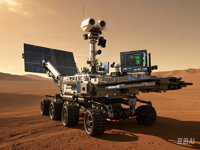
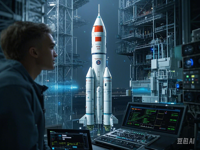
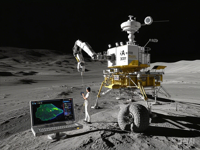
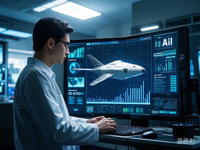
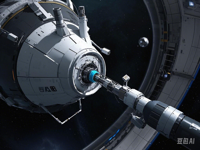
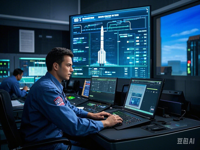

In the vast expanse of the universe, China's space endeavors are advancing with remarkable momentum. In recent years, the rapid development of artificial intelligence (AI) has injected new vitality into space mission planning, propelling China to achieve numerous remarkable milestones in the field of space exploration. From the precise docking of space stations to deep space exploration missions, AI has become an indispensable force in China's space missions.
AI in Early Space Mission Planning
In the early stages of space mission planning, the application of AI was relatively limited. However, as technology progressed, AI began to demonstrate its immense potential in this domain. In 2024, China made significant breakthroughs in AI-driven microwave radar technology, which ensured the precise docking of Tianzhou cargo spacecraft with the space station. This technological advancement not only increased the mission success rate but also laid a solid foundation for future space endeavors.
Meanwhile, AI has played a crucial role in the autonomous health monitoring of spacecraft. By analyzing real-time data and extracting key features, spacecraft can autonomously monitor their status and provide early warnings in the complex space environment. This intelligent monitoring system not only enhances the reliability of spacecraft but also reduces operational costs and extends their service life.
AI Empowering Deep Space Exploration
Deep space exploration is a key direction for China's space development, and AI's role in this area is particularly noteworthy. In 2024, the Zhurong Mars rover utilized AI-driven instruments to conduct multispectral, high-resolution surveys of the Martian surface. This mission not only provided scientists with a wealth of data but also showcased the vast potential of AI in deep space exploration.
Looking ahead, China plans to launch the Tianwen-3 Mars sample return mission in late 2028, with the goal of returning 500 grams of samples to Earth by July 2031. The success of this mission will rely heavily on AI technology, which can optimize the path planning and execution of the spacecraft, enabling autonomous decision-making and intelligent navigation in the complex Martian environment.
AI Driving Intelligent Upgrades in Space Mission Planning
With the continuous development of AI technology, China's space mission planning is moving towards full-scale intelligence. In 2024, China successfully developed the next-generation lunar exploration spacecraft, Chang'e-IV, which integrates advanced machine learning and predictive algorithms. This spacecraft can autonomously make decisions and fly in the complex lunar environment, paving the way for future manned lunar missions.
Additionally, China is actively developing the Long March-10, a new-generation manned launch vehicle. This rocket will incorporate AI technology to establish a full lifecycle, intelligent health monitoring system capable of autonomous repair. This technological breakthrough marks China's entry into the era of fully intelligent space missions.
Future Prospects for AI in Space Mission Planning
Looking to the future, AI will play an even more critical role in space mission planning. On one hand, AI will continue to optimize spacecraft design and mission execution, increasing mission success rates and efficiency. On the other hand, AI technology will facilitate intelligent management of space missions, enabling full-process intelligent control from launch to recovery.
For example, the inauguration of the Hainan Commercial Space Launch Site signifies the rapid development of China's commercial space industry. In the future, AI will provide more precise mission planning and cost control for commercial space endeavors, promoting the wide application and commercialization of space technology.